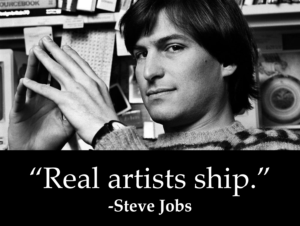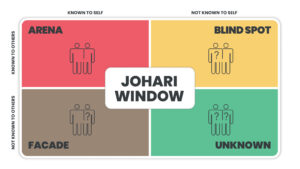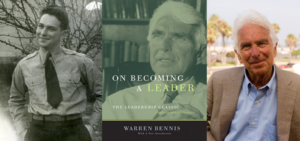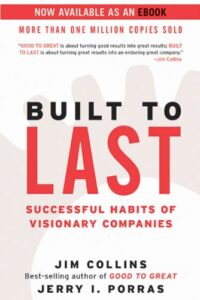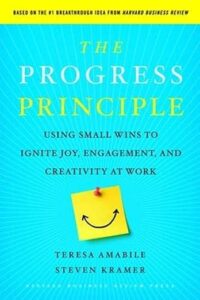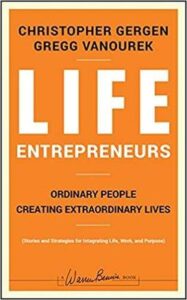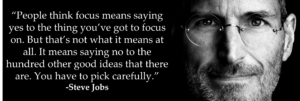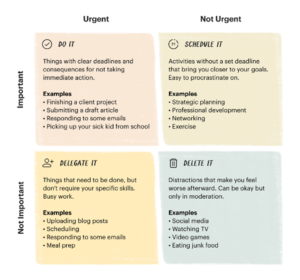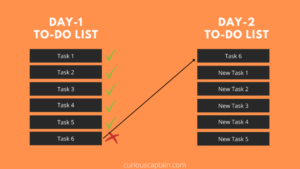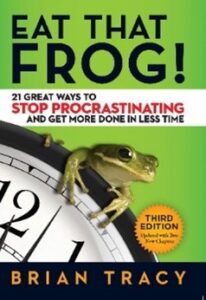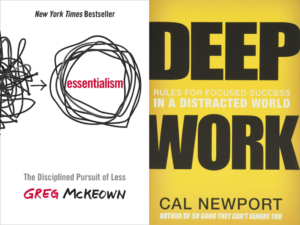Do you have passion in your life? Are you passionate about what you do?
Your passions are the things that consume you with palpable emotion over time. Do you have things you love doing so much that you’re willing to suffer for them?
Author and coach Curt Rosengren describes passion as “the energy that comes from bringing more of you into what you do. In essence, passion comes from being who you are.”
Your passions flow from your intrinsic motivation—your inner drive to pursue activities for their inherent rewards rather than external incentives—and from your natural abilities and talents.
Are you passionate about your work—or at least certain aspects of it? Do you really enjoy doing certain tasks? Do you frequently talk with others about what you love about your work? This may not be possible or easy, but it’s well worth working on by actively crafting your work to the extent you can. Otherwise, work can be too deadening.
Passions vs. Hobbies and Interests
Distinguishing passions from hobbies and interests can be tricky because they’re closely related. Here are the main differences:
- Hobbies are things you do for pleasure or relaxation but not as your main occupation.
- Interests are things you want to be involved with or learn more about, or things that attract and hold your attention.
- Passions are things that consume you with palpable emotion over time.
The crucial differences is in the depth of emotional investment. One more wrinkle: This can change. Your hobbies can evolve into passions, and vice versa.
The Advantages of Knowing and Using Your Passions
There are major advantages flowing from knowing your passions and integrating them into your life and work. Doing so can:
- increase your motivation
- elevate your engagement
- boost your productivity
- sharpen your focus
- enhance your creativity
- help you achieve your goals
- stimulate you to keep learning, growing, and developing in your areas of interest
- strengthen your persistence
- augment your resilience in the face of challenges
- induce more happiness and fulfillment
- motivate others to work in areas of their passions when they see you doing so
- help you avoid burnout
- bring about much higher job satisfaction
- produce better work performance, according to a meta-analysis of sixty studies over sixty years
Passion Probe: A New Tool for Discovering Your Passions
Instead of starting with a blank slate trying to think of what you’re passionate about, you can take a passions assessment to help you with this important process. My new Passion Probe tool prompts you to do the following:
- Choose from a list of dozens of potential passions (and add any that may be missing).
- Determine your top three to five passions. Ideally, place them in order, or at least pinpoint your top passion.
- Describe each of your passions so you have a clearer picture of it.
- Consider the extent to which you’re using (or not using) your passions at work, home, and beyond.
- Brainstorm ways you could integrate your passions more into your life and work.
- Determine what specific actions you’ll take to start employing your passions more.
- Share your passions with your trusted friends and colleagues. (My Passion Probe tool has sharing functionality built into it.) This process of discovering your passions works best when you talk it through with friends and trusted colleagues and ask for their input. What’s more, teams can talk about ways to configure work assignments around people’s passions.
You’re wise to experiment with potential passions and explore possibilities. Remember: the picture is dynamic. Passions often develop and deepen over time.
You’re wise to foster your passions intentionally. Be patient with this process. While some people know their passions straightaway, that’s pretty rare and may not be the case for you. It may take time for your passions to crystallize and for you to grasp them fully and own them. That’s okay.
Importantly, focus on multiple passions, not just one. You can have several passions. Most people do.
How Leaders Can Leverage Passions
Passions are enormously relevant if you’re a leader, because they can catalyze high performance. How? Here are four things you can do as a leader:
- Identify and employ your own passions in your work. Be a good role model.
- Carefully consider passions when making personnel decisions, such as selecting and promoting individuals, and when organizing teams and job roles. A great team includes people with complementary passions. (The same is true for strengths.)
- Ensure that all team members are employing their passions as much as possible.
- Foster the development of passions among all your team members.
Conclusion
Ultimately, the key is not merely knowing your passions but employing them more often— creatively incorporating them into more of your hours and days—and nurturing them over time.
Ideally, you’ll harness not only your passions but also your strengths to contribute to groups or causes that resonate with your core values. This integrated approach will help you craft a good life.
Wishing you well with it and let me know if I can help.
–Gregg

Reflection Questions
- What are your top passions?
- To what extent are you integrating your passions into your days?
- How could you do that more?
Tools for You
- Traps Test (Common Traps of Living) to help you identify what’s getting in the way of your happiness and quality of life
- Strengths Search to help you identify your core strengths and determine how to use them more in your life and work
- Passion Probe to help you identify your top passions and start integrating them more into your life and work
Related Articles
- “The Power of Integrating Our Passions into Our Life and Work”
- “The Most Common Myths about Passion and Work“
- “The People Who Fuel Your Passions”
- “Why Self-Awareness Is So Important—And How to Develop It”
- “How to Discover Your Purpose”
- “How to Discover Your Core Values”
- “What Are Your Strengths–And How Can You Use Them More?”
- “Tired of Settling? How to Set Your Life and Work on Fire”
- “The Trap of Losing Yourself”
- “The Trap of Living Someone Else’s Life”
Postscript: Inspirations on Passions
- “Allow yourself to be silently guided by that which you love the most.” -Rumi, 13th century poet and Sufi mystic
- “The only way to do great work is to love what you do.” -Steve Jobs, co-founder, Apple
- “If there is any difference between you and me, it may simply be that I get up every day and have a chance to do what I love to do, every day. If you want to learn anything from me, this is the best advice I can give you.” -Warren Buffett, legendary investor
- “Passion is energy. Feel the power that comes from focusing on what excites you.” -Oprah Winfrey, media entrepreneur, author, and philanthropist
- “Passion is the driver of achievement in all fields.” -Sir Ken Robinson, author
- “One of the huge mistakes people make is that they try to force an interest on themselves. You don’t choose your passions; your passions choose you.” -Jeff Bezos, founder and CEO, Amazon
++++++++++++++++++++++++++++++
Gregg Vanourek is a writer, teacher, and TEDx speaker on personal development and leadership. He is co-author of three books, including LIFE Entrepreneurs: Ordinary People Creating Extraordinary Lives (a manifesto for living with purpose and passion) and Triple Crown Leadership: Building Excellent, Ethical, and Enduring Organizations (a winner of the International Book Awards). Check out his Best Articles or get his monthly newsletter. If you found value in this article, please forward it to a friend. Every little bit helps!
















